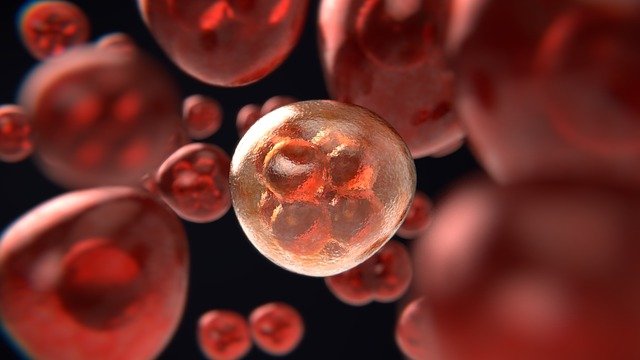What is Multiple Myeloma? Multiple Myeloma Treatment and Diagnosis.
What is Multiple Myeloma?
Multiple myeloma is a type of blood cancer that starts when the plasma cells in the body grow uncontrollably. It can affect any part of the body, but it’s most common in the bone marrow and blood.
These symptoms depend on where the cancer is found and how advanced it is.
What are the Most Common Symptoms of Multiple Myeloma?
It is a cancer that starts in the bone marrow and eventually invades the blood. It is more common in older adults and people who have a family history of myeloma.
The most common symptoms include:
Bone pain or tenderness
Fatigue or weakness
Pale skin
Swollen lymph nodes, especially in the neck, groin, or armpit.
What are the first warning signs of multiple myeloma?
It is difficult to diagnose multiple myeloma (MM) because the initial symptoms are similar to the common symptoms of other diseases. The first signs of MM are generally due to anemia and bone pain, but there are other warning signs as well.
Fever
Extreme fatigue
Weight loss
Unintentional weight gain
Bone pain
What is the main cause of multiple myeloma?
Multiple myeloma is a disease where the body produces abnormal plasma cells and these cells interfere with healthy blood cell production.
It happens when the body fails to correctly distinguish between its healthy and diseased cells.
The primary cause of multiple myeloma is not known yet. But certain risk factors that can make one more susceptible to this disease include family history, genetic predisposition, and exposure to radiation or chemicals.
How to Manage Multiple Myelomas Symptoms at Home
Multiple myelomas are a type of cancer that affects the bone marrow.
The first step toward managing Its symptoms at home is to understand what causes them. It occurs when there are too many abnormal cells in the bone marrow, which means that they have multiplied out of control.
This can affect any part of the body, but most often it affects the bones and leads to pain, fatigue, and extreme weakness. It can also affect other organs like kidneys and lungs.
Is multiple myeloma serious?
Multiple myeloma is a serious type of cancer that is difficult to detect and diagnose. It leads to the production of too many abnormal plasma cells in the bone marrow, which then makes the blood thicker and slows down its normal production.
It is serious but it can be managed by regular blood tests, doses of chemotherapy, and usually a bone marrow transplantation.
Multiple Myeloma Treatment and Diagnosis: A Comprehensive Guide to the Latest Treatments
The guide provides information about the different types of treatment methods for Multiple Myeloma. It also discusses the side effects and risks associated with these treatments.
This article is a comprehensive guide to Multiple Myeloma treatment and diagnosis. It includes information about the different types of treatments that are available for this cancer, as well as their side effects and risks.
It is a type of cancer that begins in the plasma cells in the bone marrow.
Myeloma is diagnosed by biopsy and scans. A biopsy involves taking a sample of the abnormal cells for examination under a microscope. A myeloma diagnosis typically follows an abnormal blood test, or after an x-ray has detected new bone and muscle damage.
The Different Types of Treatments for Multiple Myeloma Explained
Chemotherapy is one of the most common treatments for multiple myeloma. They are designed to kill cancer cells and stop them from multiplying.
The different types of treatments include:
1). Chemotherapy:
Chemotherapy is one of the most common treatments for multiple myeloma. This is designed to kill cancer cells and stop them from multiplying. It can be either intravenous or oral, depending on the type of chemotherapy given.
2). Immunotherapy:
Immunotherapy treatment uses a person’s immune system to fight the cancer cells in their body and can be given in several ways, including injections, intravenously, or orally. It uses drugs to attack a specific gene or proteins that are linked to cancer. These drugs can be used as both a primary and adjuvant treatment.
3). Radiation therapy:
Radiation is used to kill cells in the body, causing damage that can kill cancer cells while sparing healthy cells. This treatment kills cancer cells by using high-energy radiation from X-rays or other sources like radioactive material placed near the tumor.
Side-Effects of Multiple Myeloma Treatment
Chemotherapy is a cancer treatment. This can be used to treat many types of cancer, including leukemia, lymphoma, breast cancer, and others. Chemotherapy is a treatment that uses drugs to destroy cancer cells.
Side Effects:
Chemotherapy can cause side effects such as hair loss, nausea and vomiting, mouth sores, and more.
In the past, there have been concerns about the long-term side effects of chemotherapy treatments.
Conclusion: multiple myeloma treatment and diagnosis
The treatment of multiple myeloma is a complex process. The diagnosis of the disease is usually not straightforward and there are no clear guidelines on how to treat it.
The conclusion section should summarize the main points of the article in a short paragraph, with a link to the full article.
